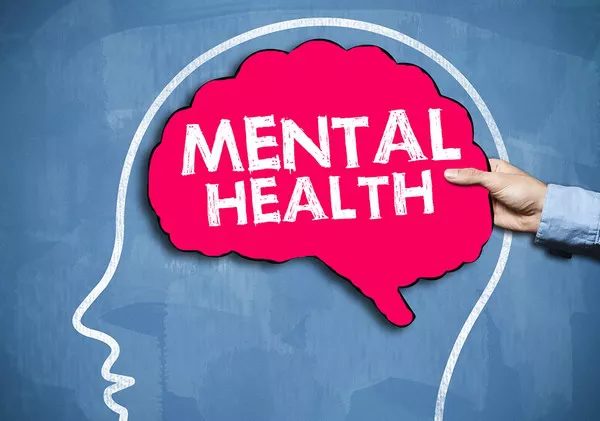Mania is a complex psychiatric phenomenon characterized by elevated mood, increased energy, and heightened activity levels. While mania is most commonly associated with bipolar disorder, it can also occur in other mental illnesses, both independently and as a symptom of underlying conditions. In this comprehensive guide, we will explore the various mental illnesses that can cause mania, examining their clinical features, diagnostic criteria, and treatment approaches.
5 Mental Illnesses That Can Cause Mania
1. Bipolar Disorder:
Bipolar disorder, formerly known as manic-depressive illness, is perhaps the most well-known mental illness associated with mania. It is a chronic mood disorder characterized by episodes of mania, hypomania, and depression. Individuals with bipolar disorder experience alternating periods of extreme mood elevation (mania or hypomania) and depressive episodes, with periods of normal mood in between.
Manic episodes in bipolar disorder are marked by distinct changes in behavior and mood, including:
- Elevated or irritable mood
- Increased energy and activity levels
- Racing thoughts and rapid speech
- Decreased need for sleep
- Grandiosity or inflated self-esteem
- Impulsive or risky behavior, such as excessive spending, reckless driving, or substance abuse
In severe cases, manic episodes may lead to psychosis, characterized by delusions or hallucinations. The presence of manic episodes is a hallmark feature of bipolar disorder and is essential for making an accurate diagnosis.
Bipolar disorder is divided into several subtypes based on the pattern and severity of mood episodes, including bipolar I disorder, bipolar II disorder, and cyclothymic disorder. Treatment for bipolar disorder typically involves mood-stabilizing medications, psychotherapy, and lifestyle modifications to manage symptoms and prevent relapse.
See Also: 8 Causes of Bipolar Disorder
2. Major Depressive Disorder with Mixed Features:
Major depressive disorder (MDD) is a common mood disorder characterized by persistent feelings of sadness, hopelessness, and loss of interest or pleasure in activities. While depression is the primary feature of MDD, some individuals may experience episodes of mixed features, where symptoms of depression coexist with features of mania or hypomania.
Mixed features in depression may include:
- Agitation or restlessness
- Irritability or hostility
- Racing thoughts
- Increased energy or activity levels
- Impulsivity or risk-taking behavior
Individuals with MDD and mixed features may be at increased risk for developing bipolar disorder or other mood disorders with manic features over time. It is essential for healthcare providers to carefully assess and monitor individuals with MDD for signs of mixed features and potential progression to bipolar disorder.
3. Substance-Induced Mania:
Substance-induced mania refers to episodes of mania or hypomania that occur as a direct result of substance abuse or withdrawal. Certain substances, including stimulants, hallucinogens, and psychoactive drugs, can trigger manic symptoms in susceptible individuals. Common substances associated with substance-induced mania include:
- Cocaine
- Amphetamines
- MDMA (Ecstasy)
- LSD (Acid)
- Cannabis (in some cases)
- Prescription medications, such as antidepressants or corticosteroids
Substance-induced mania typically occurs shortly after substance use or during withdrawal and may resolve once the effects of the substance wear off. However, prolonged or recurrent episodes of substance-induced mania may indicate an underlying mood disorder or substance use disorder requiring specialized treatment.
4. Schizoaffective Disorder:
Schizoaffective disorder is a chronic mental illness characterized by a combination of psychotic symptoms (such as hallucinations or delusions) and mood disturbances (such as mania, hypomania, or depression). Individuals with schizoaffective disorder experience episodes of psychosis that coincide with mood episodes, leading to significant impairment in social, occupational, or academic functioning.
The manic phase of schizoaffective disorder shares many similarities with bipolar disorder, including elevated mood, increased energy, and impulsivity. However, in schizoaffective disorder, manic episodes occur alongside psychotic symptoms, such as disorganized thinking or hallucinations, distinguishing it from pure bipolar disorder.
Treatment for schizoaffective disorder typically involves a combination of antipsychotic medications, mood stabilizers, and psychotherapy to manage symptoms and improve overall functioning. Individuals with schizoaffective disorder may require long-term treatment and ongoing support to maintain stability and prevent relapse.
5. Other Mental Illnesses Associated with Mania:
In addition to the mental illnesses mentioned above, mania can also occur in other psychiatric conditions, either independently or as a secondary symptom. Some of these conditions include:
Borderline personality disorder: Individuals with borderline personality disorder may experience intense mood swings, including episodes of euphoria or impulsivity resembling mania.
Generalized anxiety disorder (GAD): While anxiety is the primary feature of GAD, some individuals may experience periods of increased energy or agitation that resemble hypomania.
Attention-deficit/hyperactivity disorder (ADHD): In some cases, individuals with ADHD may exhibit symptoms of hyperactivity, impulsivity, and distractibility that mimic manic features.
It is essential for healthcare providers to conduct a thorough assessment and differential diagnosis to determine the underlying cause of manic symptoms and tailor treatment accordingly.
Conclusion:
Mania is a complex psychiatric phenomenon that can occur in various mental illnesses, including bipolar disorder, major depressive disorder with mixed features, substance-induced mania, and schizoaffective disorder. Understanding the clinical features, diagnostic criteria, and treatment approaches for these conditions is essential for accurate diagnosis and effective management of manic symptoms. By recognizing the relationship between mental illnesses and mania and addressing underlying factors contributing to mood disturbances, healthcare providers can help individuals achieve stability and improve their overall quality of life.


